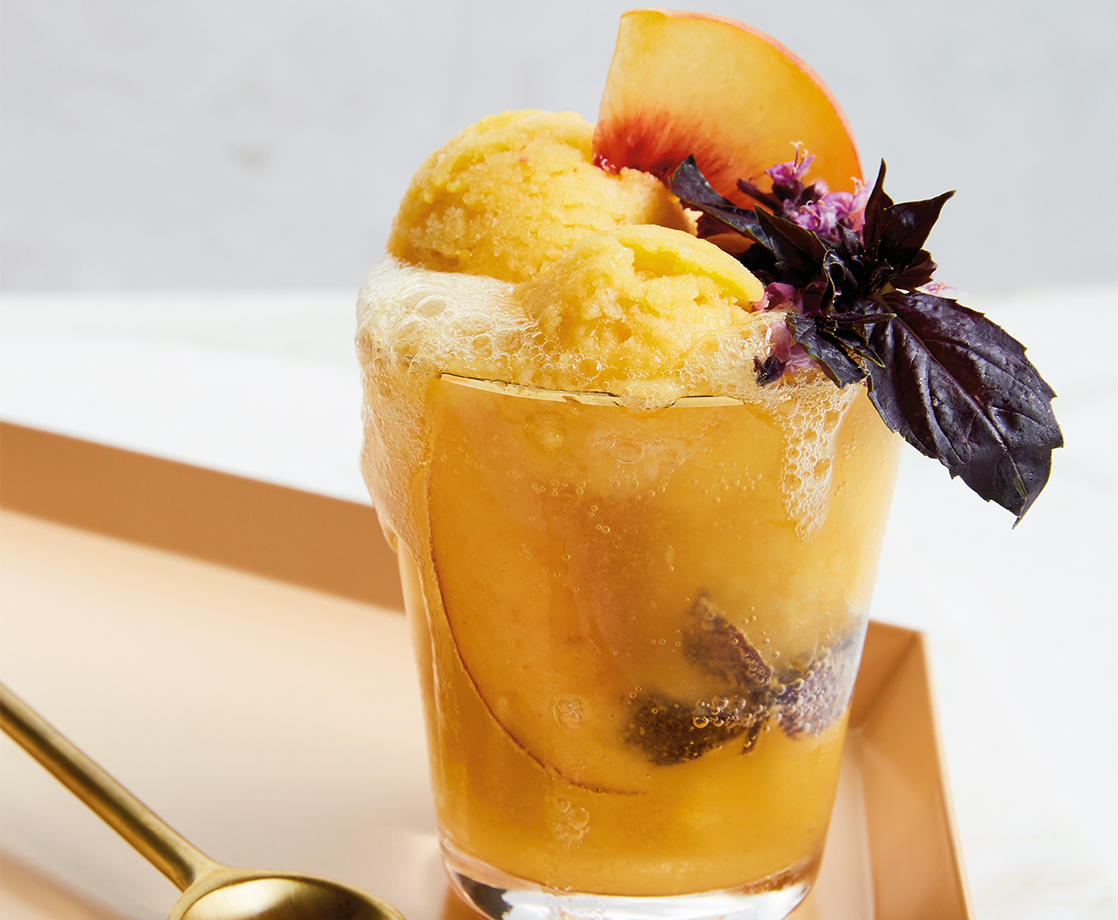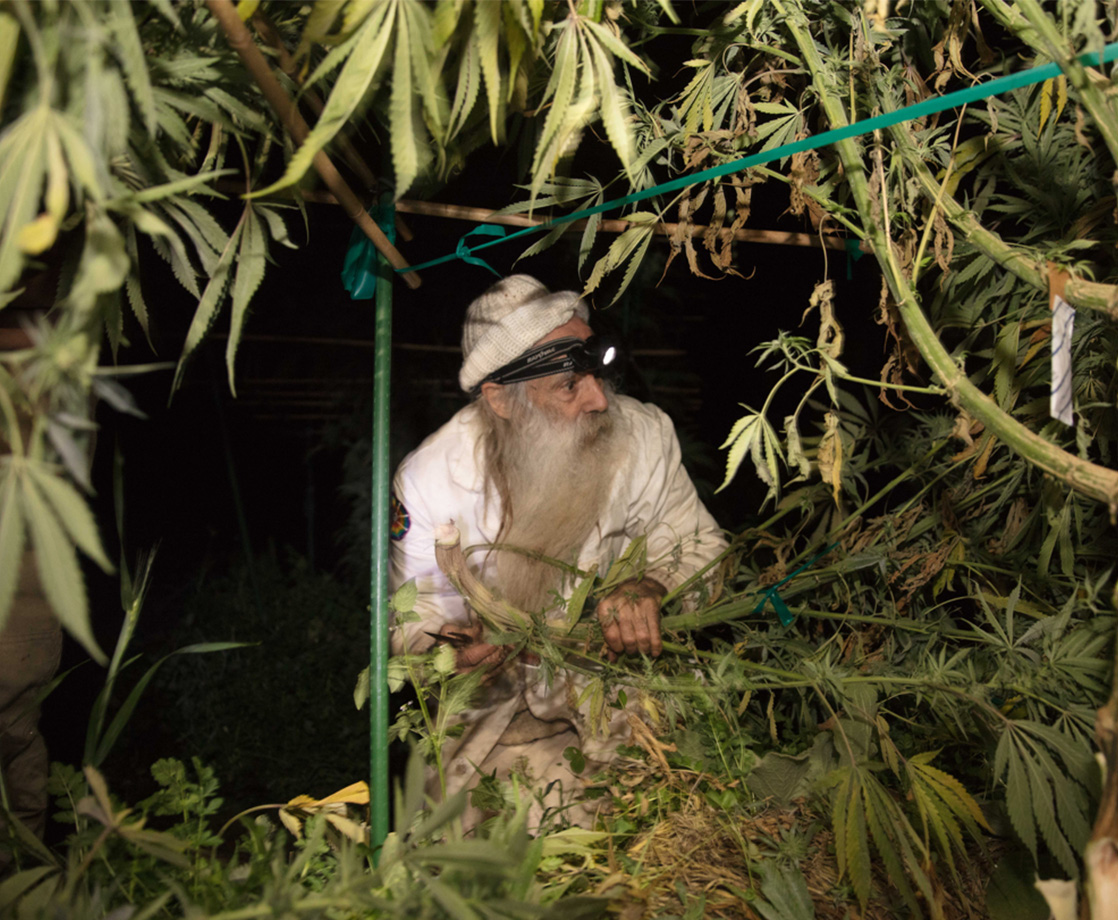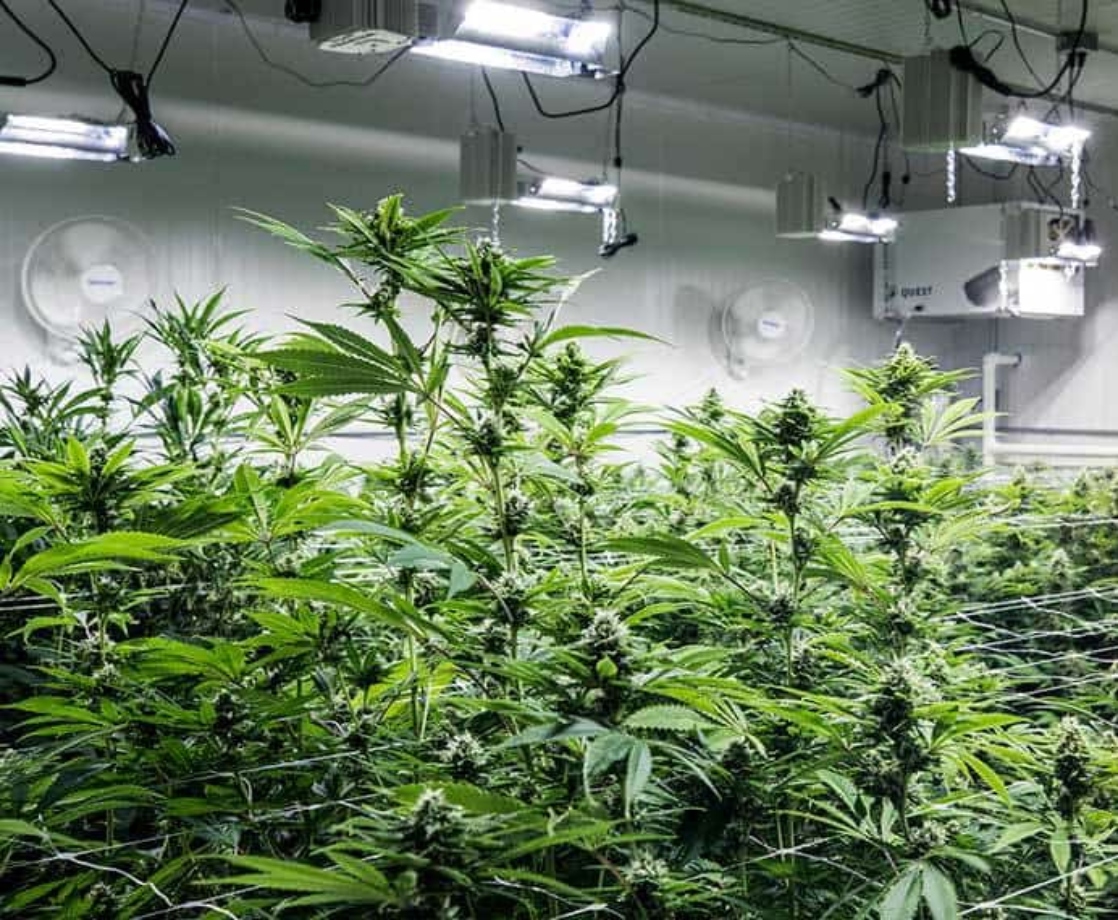All photos courtesy of Chef Coreen Carroll
As the world of cannabis and the culinary arts continue to collide, it is still rare to find a chef who has experience in every facet of the industry, from fine dining to dispensaries. But while her contemporaries are working to catch up, Chef Coreen Carroll has already shelved more careers than you can count on one hand, and is somehow still finding ways to push the envelope and test the limits of cannabis use in the kitchen.
Born and raised in Germany, Carroll moved stateside in her early teens. She began pursuing her culinary dreams at the San Francisco Cooking School, taking on a slew of technical, niche restaurant industry jobs, including an apprenticeship in butchering and gigs at the San Francisco Cheese School. But after meeting her eventual husband, Ryan Bush, who was getting his own cannabis education at Oakland’s Oaksterdam University, Carroll and her new beau decided to forego the traditional food world and get into the edibles game.
Fresh out of culinary school, Carroll and Bush spent a year helping to launch Kim Geraghty’s Madame Munchie brand, a line of infused gourmet French macarons, in 2014. The brand won a High Times Cannabis Cup award in its first year of sales, and immediately took off, leading to features in the San Francisco Chronicle and Food & Wine Magazine. Still, just because an idea is successful, doesn’t mean it’s fulfilling. And for Carroll, the production-scale process brought more hassle than happiness, especially when focusing on one of the world’s most fragile pastries.
When one door closes, though, another opens. Using the cannabis industry connections they had made through Madame Munchie, Carroll and Bush launched their own private dining event series in 20155 called the Cannaisseur Series. Combining low-dose edibles, intermezzo smoke and dab breaks, CBD-enhanced entrees, and creative mocktails, the duo has carved their own lane in the exploding cannabis dining scene.
MERRY JANE reached out to Chef Carroll to learn more about the Cannaisseur Series events, how cannabis plays into concepts of farm-to-table dining, her cookbook Edibles: Small Bites for the Modern Cannabis Kitchen, and how to craft the perfect infused beverage to help conquer winter’s frigid grip and transport you back to summer’s loving embrace.
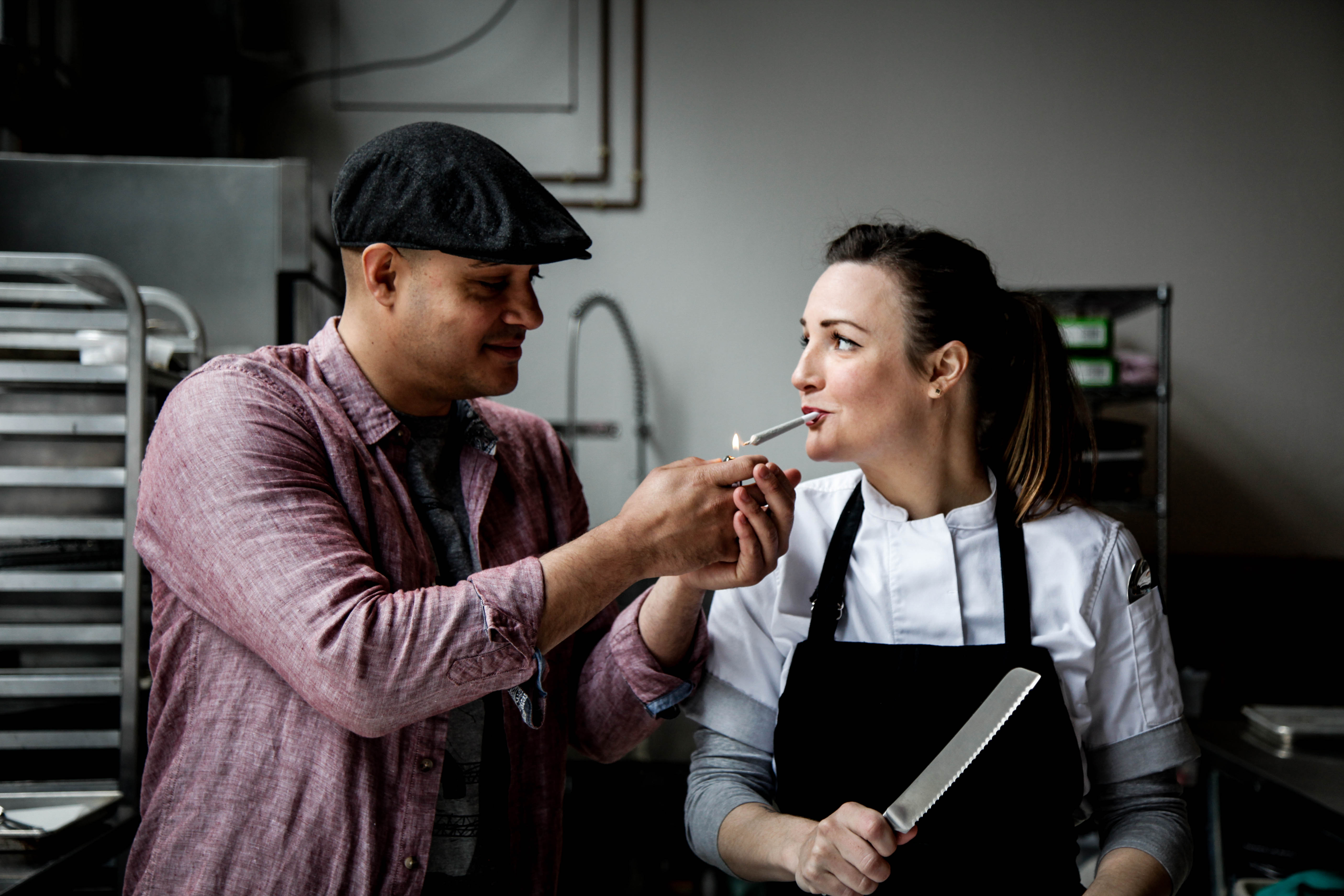
Ryan Bush and Coreen Carroll, photographed by Craig Hackey
Chef Coreen Carroll’s Peach + Ginger Ale Float
Time needed: 10 minutes of hands-on activity
Makes: 4 floats
Dosage Note: This recipe was developed using our recipe for Canna Tincture with a potency to yield approximately 5mg of THC per float.
Recipe Note: Take your mocktail game to the next level with this cool and refreshing sorbet float. The sorbet is particularly good in summertime when nectar-sweet, ripe peaches are at the ready. A zing of lime juice perks these up, and fragrant basil adds a subtle floral herbaceousness. If you’re lucky enough to find purple basil (sometimes called opal basil), snag it — those deep purple leaves make a spectacular garnish.
Ingredients:
– 2 cups (280g) of frozen diced peaches, or one 10oz (280g) bag of frozen peaches
– Juice of 2 or 3 limes, depending on how juicy they are
– ½ tsp of Canna Tincture
– 1 bunch of purple basil or regular basil
– 32 fl oz ml of Ginger Ale
– Fresh ripe peach slices for garnishing
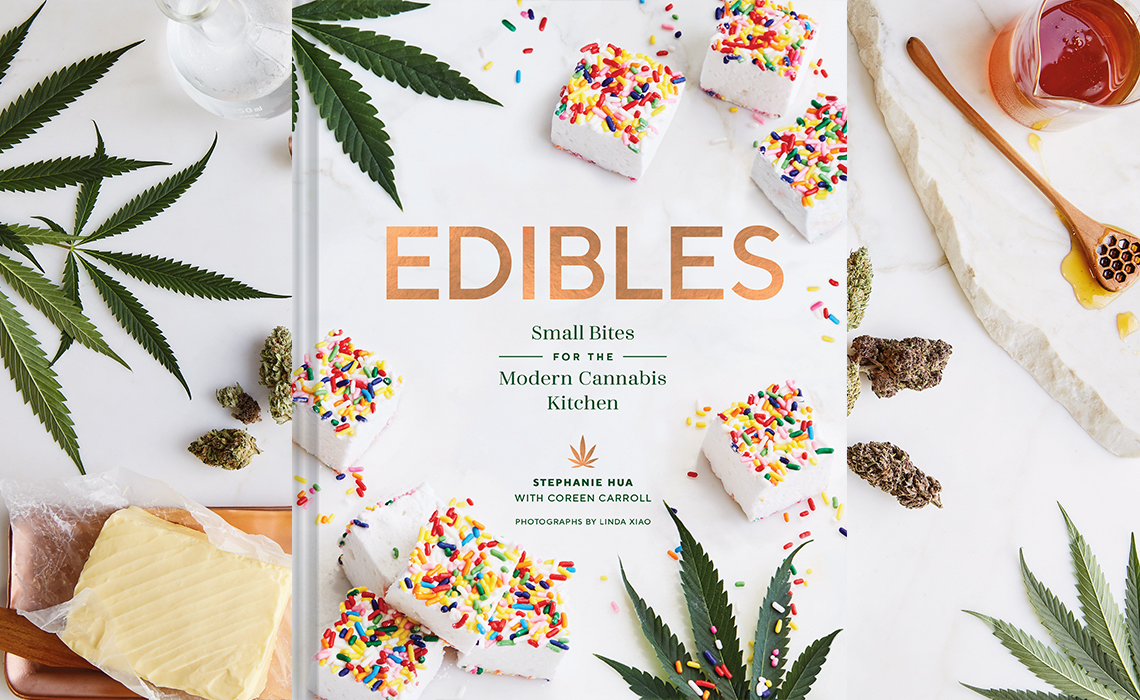
Instructions via “Edibles” by Stephanie Hua and Coreen Carroll
– In a food processor or blender, combine the frozen peaches and 1 tbsp of lime juice. Blend until the mixture is the consistency of sorbet
– Set out 4 glasses
– Place ⅛ tsp [½ g] of Canna Tincture, 1 tsp of lime juice, and 4 basil leaves into each glass
– Using a muddler or the end of a wooden spoon, press down lightly on the leaves until they are fragrant
– Fill each glass with Ginger Ale and stir
– Using an ice cream scoop, top each glass with 2 scoops of peach sorbet.
– Garnish with basil leaves and peach slices.
– Cheers!
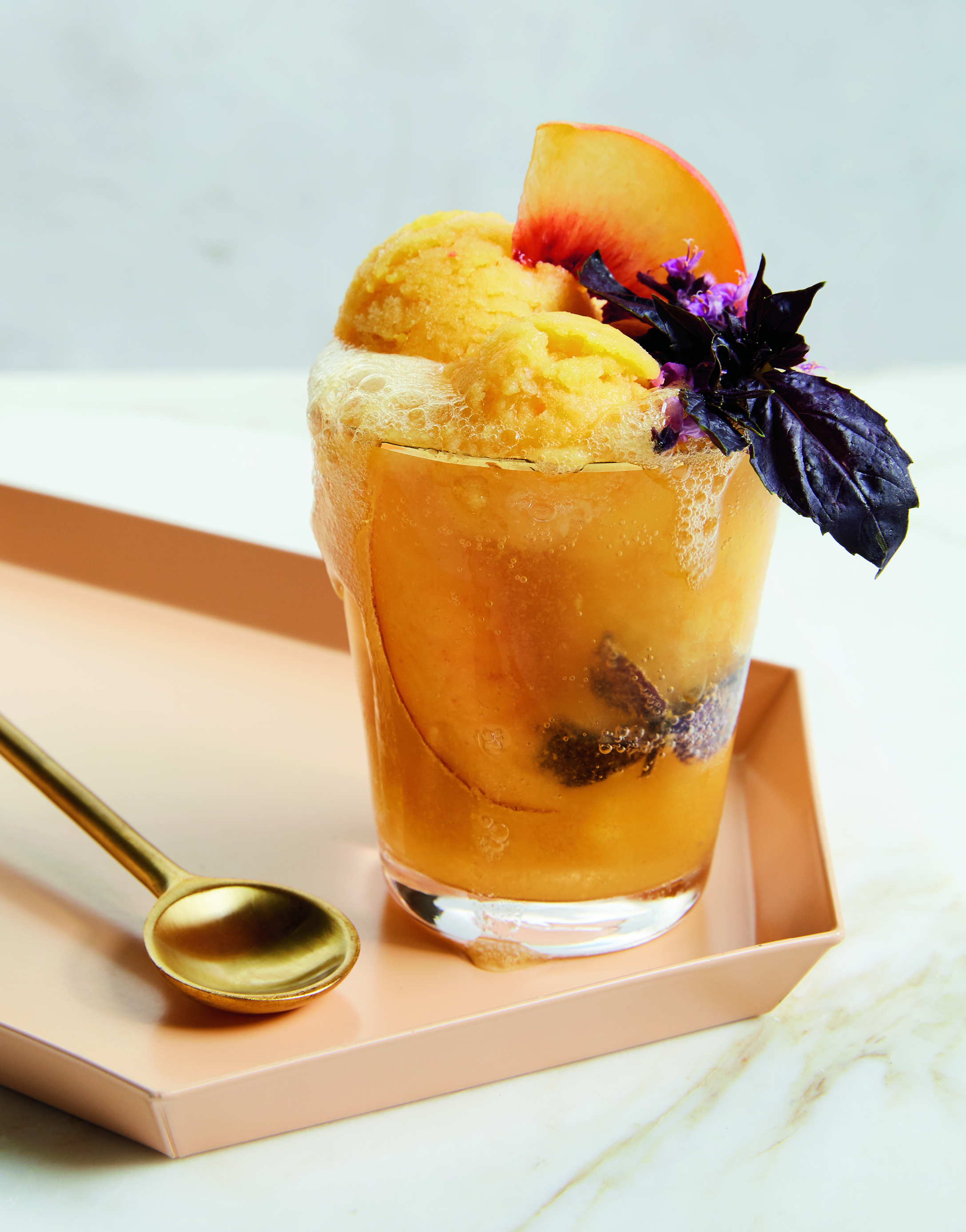
MERRY JANE: You and your husband Ryan first entered the cannabis industry through a traditional edibles company before starting your own private dining events, the Cannaisseur Series. Can you tell me more about that journey and how you decided to ditch the products hustle for something more personal?
Coreen Carroll: The experience we gained launching Madame Munchie was absolutely invaluable. It gave us a foundational understanding of how the industry worked and a network of great friends who’ve built great companies that will last a lifetime. But from very early on, I knew that was not what I wanted to do everyday. Making the same product day in and day out, which happened to be one of the hardest pastries in the world to make, was both mundane and frustrating.
While we were still running the company, Ryan and I partnered with a couple of friends to host a pop-up cannabis dinner where we provided the edibles as dessert and another chef provided the meal — the concept was born there. Around that same time, I was also working for an underground pop-up series called Subculture Dining Club, where I really learned the ins and outs of running an underground event series under Chef Russell Jackson. As soon as we decided to move on from the edibles business, I already began planning the first event of what would become the Cannaisseur Series.
I was looking for more of a creative outlet where I could come up with innovative ways to use cannabis ingredients in my dishes. Cannabis and food lovers were in need of a place to enjoy both passions in a safe, comfortable setting, and growers/product makers were looking for a way to connect directly with the consumers that were interested in their products. So the Cannaisseur Series was born.
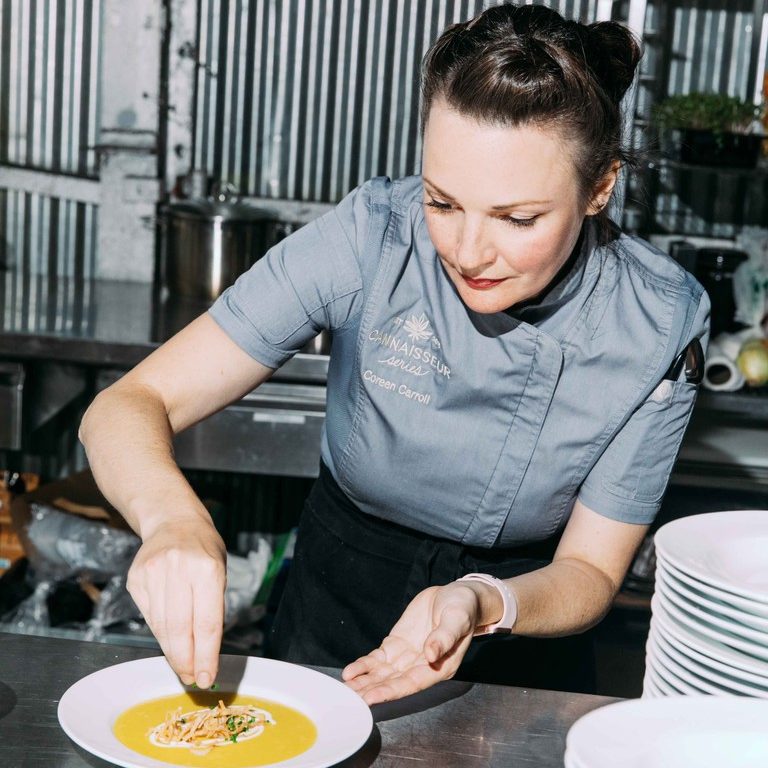
Photo of Coreen via
At your Cannaisseur Series events, guests are served a low-dose, infused horderves before the meal, but are then served non-psychoactive main dishes paired with intermezzo flower and extract pairings. How did you settle on this format, and how is the experience different from other cannabis dining events?
We understood early on that people have an extremely wide variance in their cannabis tolerance. Especially when it comes to edibles. To make the event extremely approachable for everyone of all tolerance levels, we wanted a way to give folks the option to consume as much or as little as they felt comfortable with, without feeling like they’re missing out on the full experience. We also love smoking joints and would generally classify ourselves as flower people, so (selfishly) we needed to make sure that we got a chance to sample the [bud] from our sponsors in our favorite form.
We also found it much easier to guide the experience along by including smoking/vaping, as well. We always start with a sativa after the first course, a high-CBD strain after the second course when the edibles from the welcome hour set in, and an indica strain at the end.
Do you serve alcohol at your events? If so, is the booze specifically chosen to pair intoxication levels with the infused dishes and cannabis consumption breaks?
We generally offer an infused “mocktail” as a welcome drink, and sometimes have beer or wine on hand. But to be honest, people don’t drink much when cannabis is the star. We’ve partnered with The Herb Somm in the past to do wine and cannabis pairing events, where the focus is on pairing small samples of wine with certain terpene-heavy flower strains.
The Cannaisseur Series crafts each menu to the specific event, but features an overarching focus on fresh, seasonal ingredients. Do you find that your options for cannabis varieties are also more abundant in the months after the fall harvest season, or has indoor cultivation and extraction technology removed weed’s seasonal aspect?
I love this question because it brings up an important point. Nowadays, fewer people realize that cannabis has a natural season with the sun. It’s something that we celebrate every year with Cannaisseur Series at our Harvest to Table Dinner in November. We showcase a farmer from the Emerald Triangle and their newest harvest. It’s really a beautiful thing. Indoor cultivation has certainly been perfected over the years to produce more concentrated, robust, and high-output flowers. Does that make one better over the other? We don’t believe so. We like to give equal love to both indoor and sungrown flower at our events because we have really close cultivator friends that do both!
In your first cookbook, Edibles: Small Bites for the Modern Cannabis Kitchen, you and co-author Stephanie Hua include recipes for both sweet and savory infused dishes. How important was it to show a wide range of what is possible in cannabis cooking?
One of the core focuses in the book was entertainment. Not only is it a way to destigmatize cannabis by normalizing its use like you would alcohol, but sharing with friends is one of the best ways to enjoy cannabis. For us, it was important to include savory dishes that don’t always incorporate sugar because when you throw a dinner party, you don’t only serve sweet dishes, do you? It was really important to both Stephanie and I to include a recipe for everyone with all types of diets. No matter what your dietary restrictions are, there is a recipe in the book for you. Several dairy and gluten free recipes can be found throughout the book, as well some traditional canna-treats like the brownie.
As California moves into 2019 as the United States’ premier cannabis destination, do you foresee an increased focus on social consumption and community-focused events in the near future?
2019 will be a year of experimentation. Social consumption lounges are starting to pop-up, with places like San Francisco and Oakland already permitting lounges for smoking. The next evolution of that will be to allow for food and drinks to be served along with it. Currently the state law doesn’t allow for it, but cities like West Hollywood are really pushing the boundaries with the new cafes and restaurant concepts they just approved for local permits.
It will be interesting to follow along how this plays out at the state level, but I have hope that other cities will soon follow once they realize responsible consumption outlets like these are much needed. There’s a really great new movement we are a part of called Crop-2-Kitchen where a group of cannabis chefs, restaurateurs, and folks who are generally interested in cannabis cuisine are coming together to help provide a framework for localities to [use as a] model when looking at regulating cannabis cuisine. 2020 will hopefully be the year where things come more into clarity.
For more on the Cannaisseur Series, visit the event’s website here. And order your copy of “Edibles” by Stephanie Hua and Coreen Carroll here
Follow Zach Harris on Twitter


